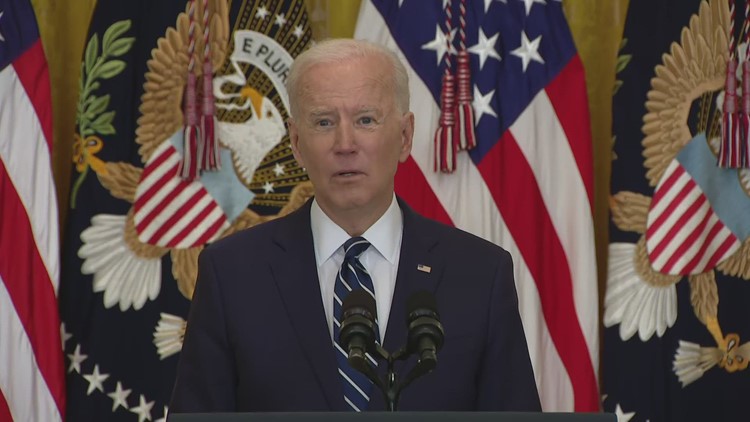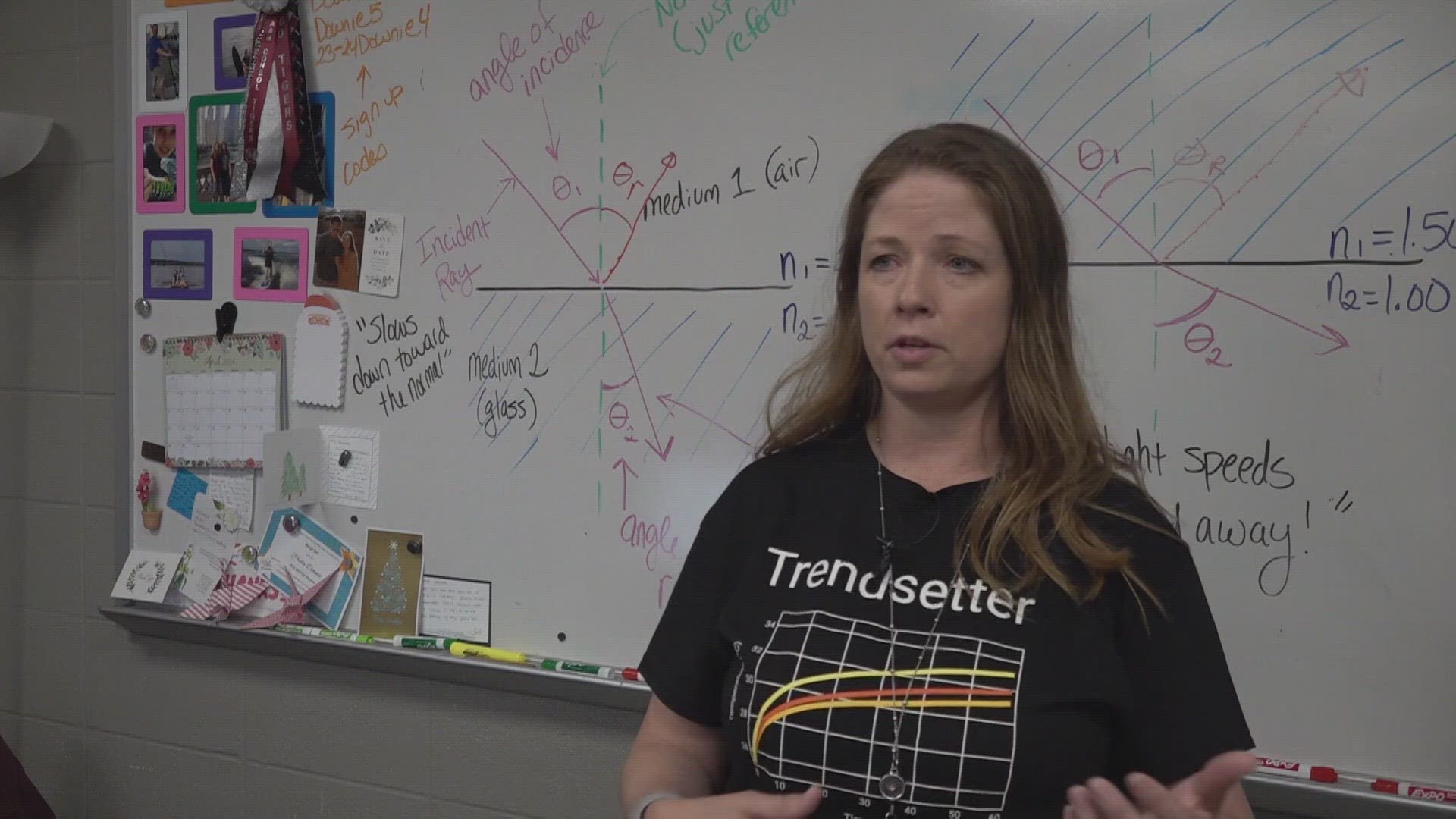President Joe Biden held his first press conference as president on March 25, a little over two months after he was first sworn in. He began the press conference with a short introduction and then fielded questions from reporters. The press conference lasted for about an hour.
Biden answered a number of questions on topics including immigration, COVID-19, the economy, infrastructure and his future political plans.
The VERIFY team compiled fact-checks on some of the claims made about the press conference and from Biden himself while answering questions from reporters.
CLAIM: This is the latest a president has ever held their first press conference
We can verify this is true, at least since presidents first began holding press conferences.
The White House Historical Association said the first presidential press conference was held by Woodrow Wilson in 1913. The University of California - Santa Barbara has a table documenting the first press conference for every president since Calvin Coolidge, who was Wilson’s successor. According to them, Biden’s first conference 64 days into his presidency is nearly double the next latest first press conference: 33 days in George W. Bush’s presidency.
CLAIM: “And just this morning, we learned that the number of people filing for weekly unemployment insurance fell by nearly 100,000 persons. This is the first time in a year the number’s fallen below the pre-pandemic high.” -- Joe Biden
We can verify Biden’s claim about unemployment is true, at least for now.
A table from the U.S. Department of Labor shows that the pre-pandemic high for seasonally adjusted initial unemployment claims was 695,000 claims on the week of Oct. 2, 1982. That table also shows that since claims spiked to over three million in March of 2020, they’ve yet to fall below that number despite staying under one million weekly claims since late August.
A recent news release from the Department of Labor said the advance figure for the week ending on March 20 was 684,000. However, this number may be revised later — the same news release said the previous week’s numbers were increased by 11,000 in a revision of the advance figure released prior. If such a revision was mirrored for this week’s figure, it would equal the pre-pandemic high.
CLAIM: “We rank 13th globally in infrastructure.” -- Joe Biden
Biden said this claim as part of a larger statement talking about the need for federal investment in U.S. infrastructure. We can verify this claim is true in one reputable organization’s ranking, but other organizations rank America’s infrastructure differently.
Biden was referring to the World Economic Forum’s 2019 Global Competitiveness Report for the country’s infrastructure ranking, which is on page 582. However, the most recent World Bank infrastructure ranking in 2018 listed the United States higher in seventh. That’s because there isn’t a single universally-accepted way to measure the quality of a country’s infrastructure. The World Economic Forum lists what goes into their ranking on page 617 of their report.
Biden compared infrastructure spending between the United States and China to illustrate his point, but data from Statista shows that China is an outlier in its spending, and the United States has below-average infrastructure spending based on its GDP.
A 2017 report from the G20, a group of countries the United States is a part of, found that at the current rate of American infrastructure spending, the U.S. has the largest gap between what it is spending and what it needs to spend on infrastructure by 2040 of any country the report measured.
CLAIM: “They passed a close to $2 trillion Trump tax cut, 83% going to the Top 1%. Do you hear them talk about that at all?” -- Joe Biden
This claim needs context. The 83% figure is a future projection of the long-term beneficiaries of the 2017 tax cuts, although many of the recent benefits still go to the wealthy.
Biden was referring to a 2017 report from the Tax Policy Center that analyzed the effects of the Trump tax cuts based on income groups. Its analysis found that in 2018, 20.5% of the benefits from the tax cut would go to the Top 1% and 65.3% percent would go to the wealthiest fifth of the population. It’s not until 2027 that the Tax Policy Center thought the Top 1% would receive nearly 83% of the benefits — and almost all of the benefits would go exclusively to the wealthiest fifth of the population.
That’s because the individual tax cuts in the law are currently set to expire in 2025 while the law’s corporate tax cuts were designed to be permanent.



